If you’d rather listen to this week’s musings rather than read it, please plug in, but do look at the pictures!
It wasn’t just a massive earthquake which destroyed Lisbon in 1755, but a tsunami which swept in from the ocean and swamped the city.
So it was perhaps ironic we decided to visit the new Lisbon earthquake museum the morning after another great flood.
After months of drought, Portugal is being dowsed by heavy rain and the capital’s ageing drainage system has been bearing the brunt.
We love this welcome water, which is gradually raising the level of our lake, but lower parts of Lisbon have been flooded first by what was left of Hurricane Danielle and now by a series of low pressure weather systems moving in from the Atlantic.
The cold weather sending shivers across northern Europe has been pushing storms into the Iberian peninsula and making for a warm but very wet December.
We’d already planned a week in Lisbon to battle Ana’s bureaucratic nightmare of acquiring a Portuguese driving license, but with our daughter Oda suddenly arriving from Los Angeles for Christmas it became a lot more fun.
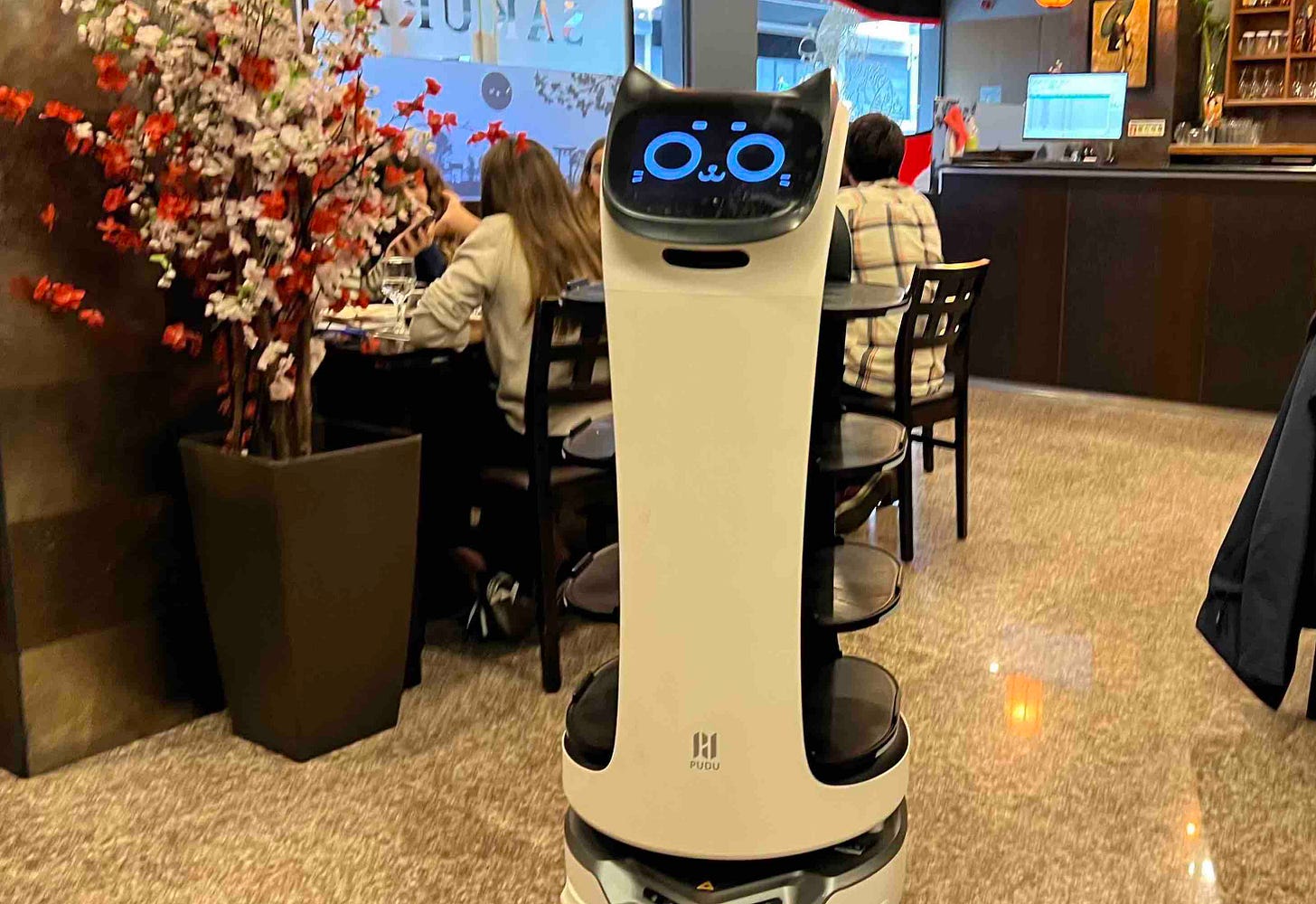
We did wine tastings, were served sushi by a robot, pondered the creepy high-kicking baby Jesus red Christmas flags that adorn the city’s balconies, suffered joy then disappointment in the World Cup, gave Simon a haircut...and finally got to visit a museum I’d been eyeing up for a while.
And we did something that the big dog Garfunkel had been wanting to do all week: we got into a box to be transported to another place and another time.
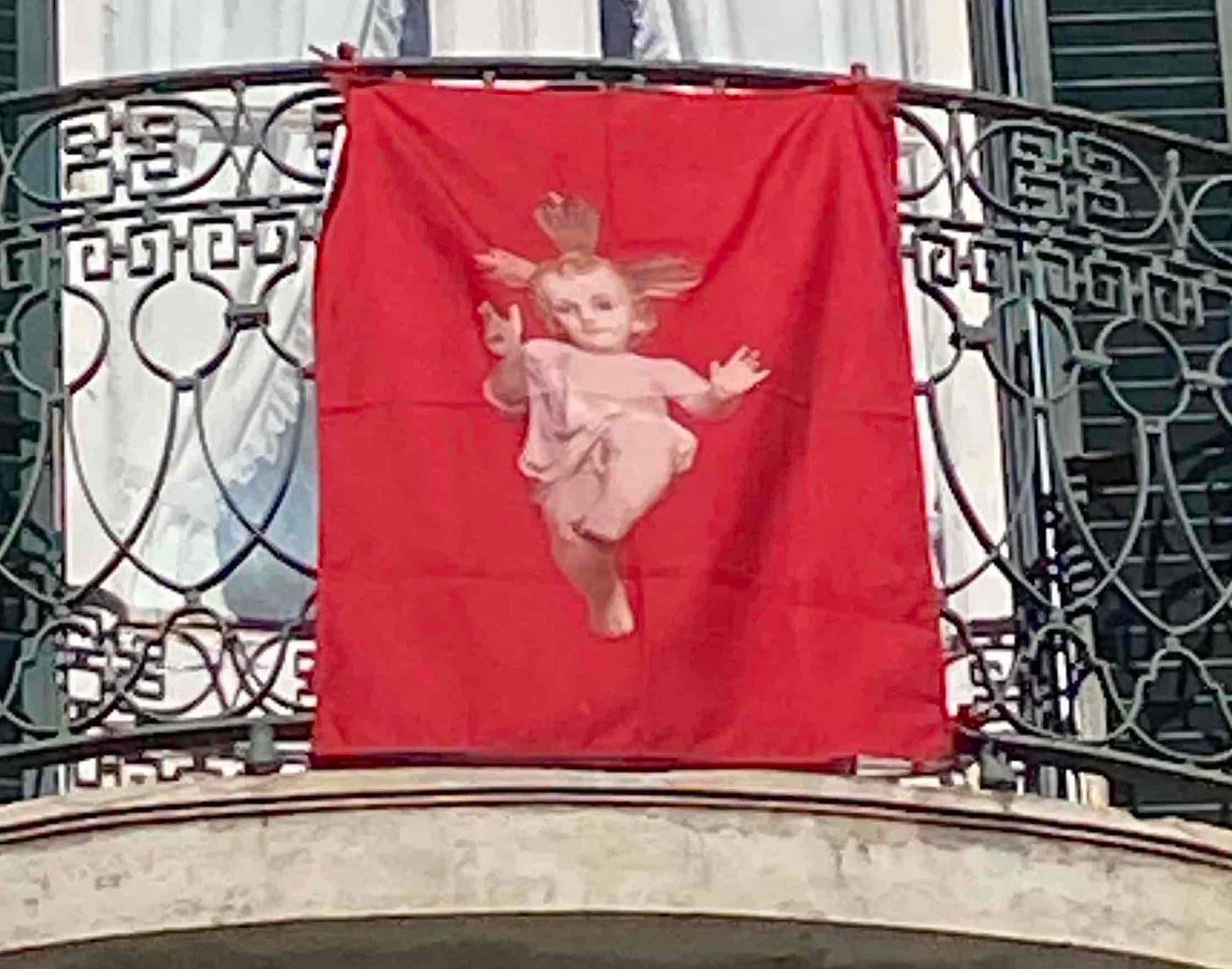
I’m fascinated by Lisbon’s 1755 earthquake: it destroyed what was then one of Europe’s richest cities, sparked a new science called seismology and helped the Enlightenment on its way.
I’ve wanted to visit ‘Quake’ since I saw this great BBC Reel piece on the museum - and the story of the impact it had around the world.
The interactive high-tech earthquake centre first tells the stories of San Francisco’s Big One in 1906 and the Japan earthquake and tsunami which I saw up close in 2011 reporting on it for the BBC.
Then we stepped into a time machine to transport us to the morning of 1st November 1755 – All Saints Day – to wander Lisbon’s streets, sit in a virtual church and experience the shaking, the collapsing buildings and the fires started by all the falling religious candles.
Tens of thousands of people died in one of the world’s strongest recorded earthquakes and most of Lisbon was destroyed and needed to be rebuilt.
Sadly, present day storm damage cut the experience short – technical problems crashed the system before the crescendo – but we learned how all four elements of earth, fire, water and a wind which fanned the flames and burned the city for five days, were seen as a sign of God’s anger.
Dog’s anger, meanwhile, was Garfie on a city break.
He’s a country bumpkin seriously out of his comfort zone amid the noisy, uncontrollable city, and our car was his magic box of freedom.
Every day while we were in Lisbon he would sniff out Cassie the Hilux wherever we’d parked and sit next to her refusing to budge, knowing it was his only escape vessel – a portal back to his Alentejo home and away from all this noise.
But I’m afraid we’ll be back Garfunkel: the museum promised us another visit for free, and having been caught up in the storm the night before we were sympathetic to their technical troubles.
We were at the fabulous Zunzum Gastrobar by the river when the downpour began, having organised a wine tasting event for a friend and her group of Human Rights Watch colleagues who were visiting Lisbon for a conference.
They’d been introduced to Portuguese wine by our friend Bruno Gomes, sampled fantastic wines from Rocim and invited us to stay for dinner.
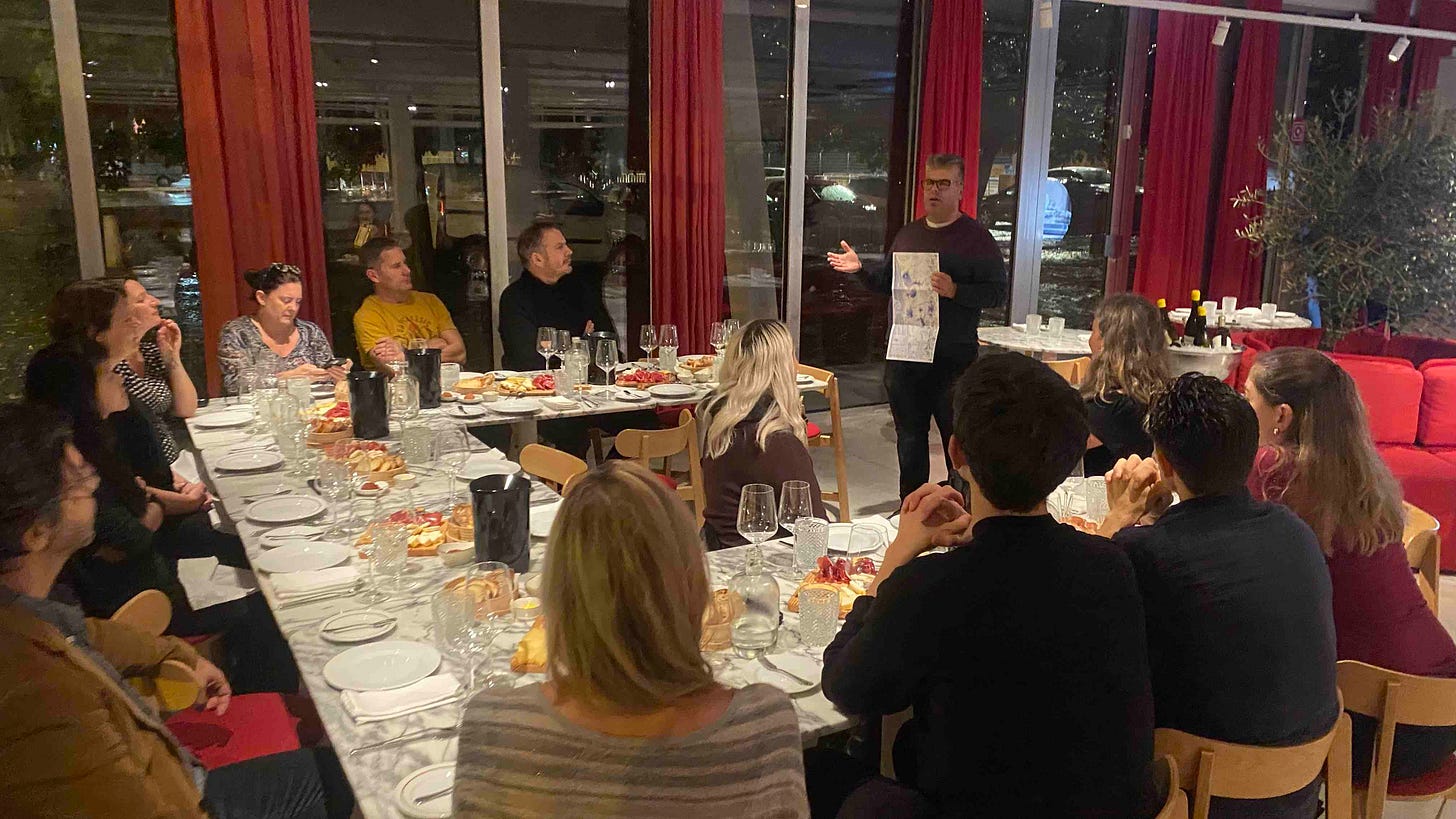
We even managed to get most of them up to the fabulously weird Pavilhão Chinês cocktail bar afterwards, despite the deluge and the transport challenges.
But as we tried to head home we realised just how crazy the storm had become as drains were overwhelmed, water flooded down the many hills of Lisbon into the lower lying neighbourhoods...and we got a phone call from Texas.
“Are you in Lisbon?” asked our entrepreneur brother in law Pasi, who was in Austin working on his artificial intelligence-driven household recycling machine.
“Can you get to the flat and wake [my wife] Rita please, as she’s gone to bed and the underground car park is flooding – we need to try and save the cars.”
We waded out through the rain looking for a taxi willing to take us on an adventure, and had started heading downhill on foot when we got lucky with an Uber.
As we descended into their low-lying district of hip Alcântara we saw cars abandoned in the streets – the remnants of a surging flood which had swept through the city and inundated our in-laws’ parking garage.
By the time we arrived Ana’s sister Rita was awake and the kids were asleep, so we headed down into the basement to find the cars almost afloat in waters which were thankfully receding before they had reached damage level.
Their cars were fine, but those parked on the street above had been submerged – the next morning we watched their owners bailing water from the footwells as the news reporters went live from their neighbourhood.
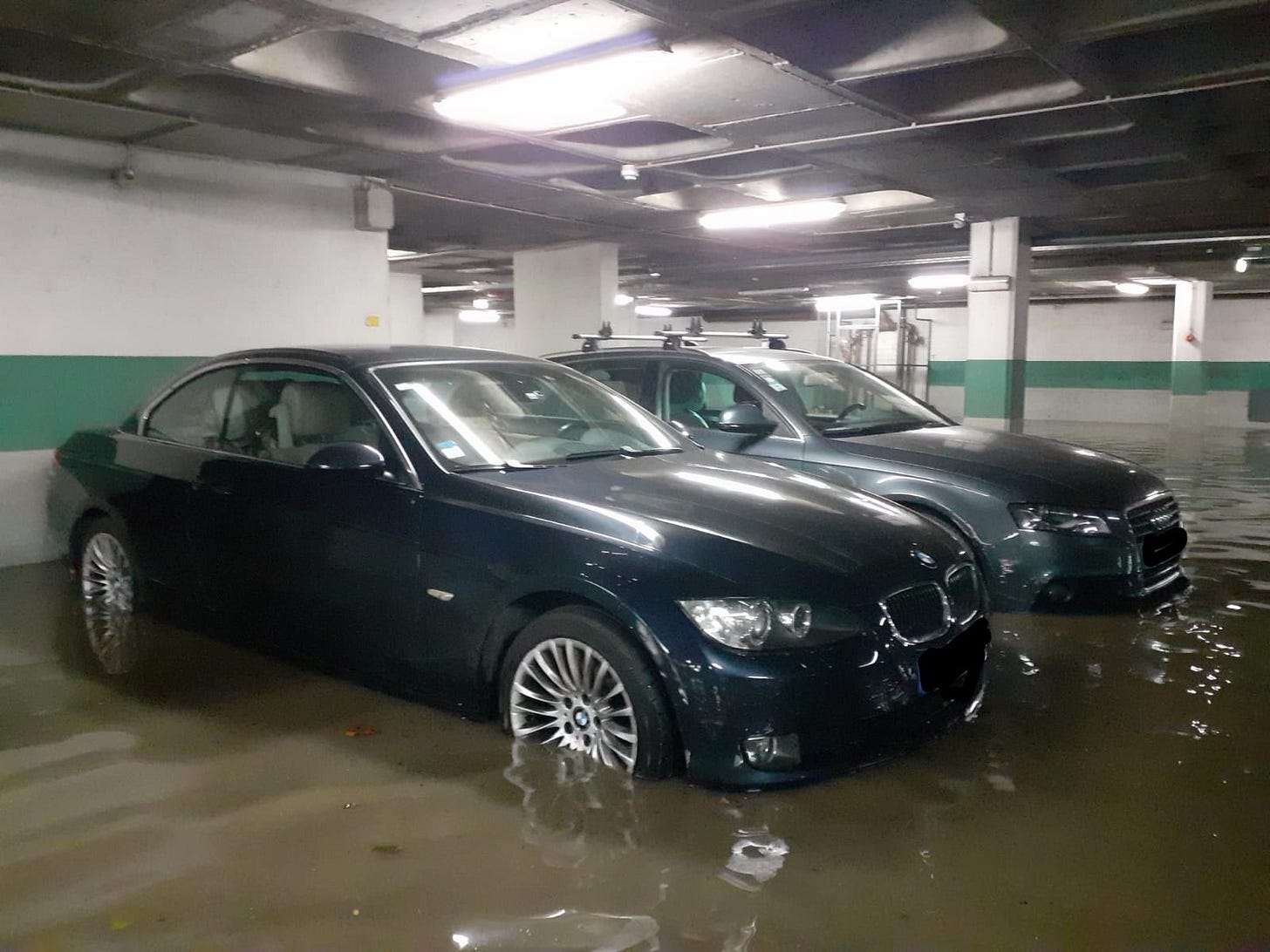
We shopped and we dined; we took the dogs to the park; we watched Portugal win and then Portugal lose World Cup games on the same night as England; we sent Simon to the groomers and then rescued him from the nasty cutting woman; and we continued to ponder creepy Jesus.
Then the day finally came for Garfie to clamber into the magic box of freedom, and to be driven back home to the peace and quiet of the valley.
The rain had also been falling in Garfie’s Alentejo garden and our preparations had broadly been successful.
I was a little cross not to have quite finished getting all the gutters connected to the solar panel arrays to harvest rainwater into the lake before we’d left.
Our previous weekend visitor Hugh Jennings and I had done most of the job, but were short of a few parts to finish the piping.
But we had all seeded the dam with oats following advice from landscaper Carlos for greening up the newly moved clay and using the bulldozer tracks to stop the seeds from washing down the hill.
Carlos had also managed to plant our three beautiful centennial olive trees, but their wide and shallow holes had needed a little extra soil to ensure they weren’t drowned by the rain.
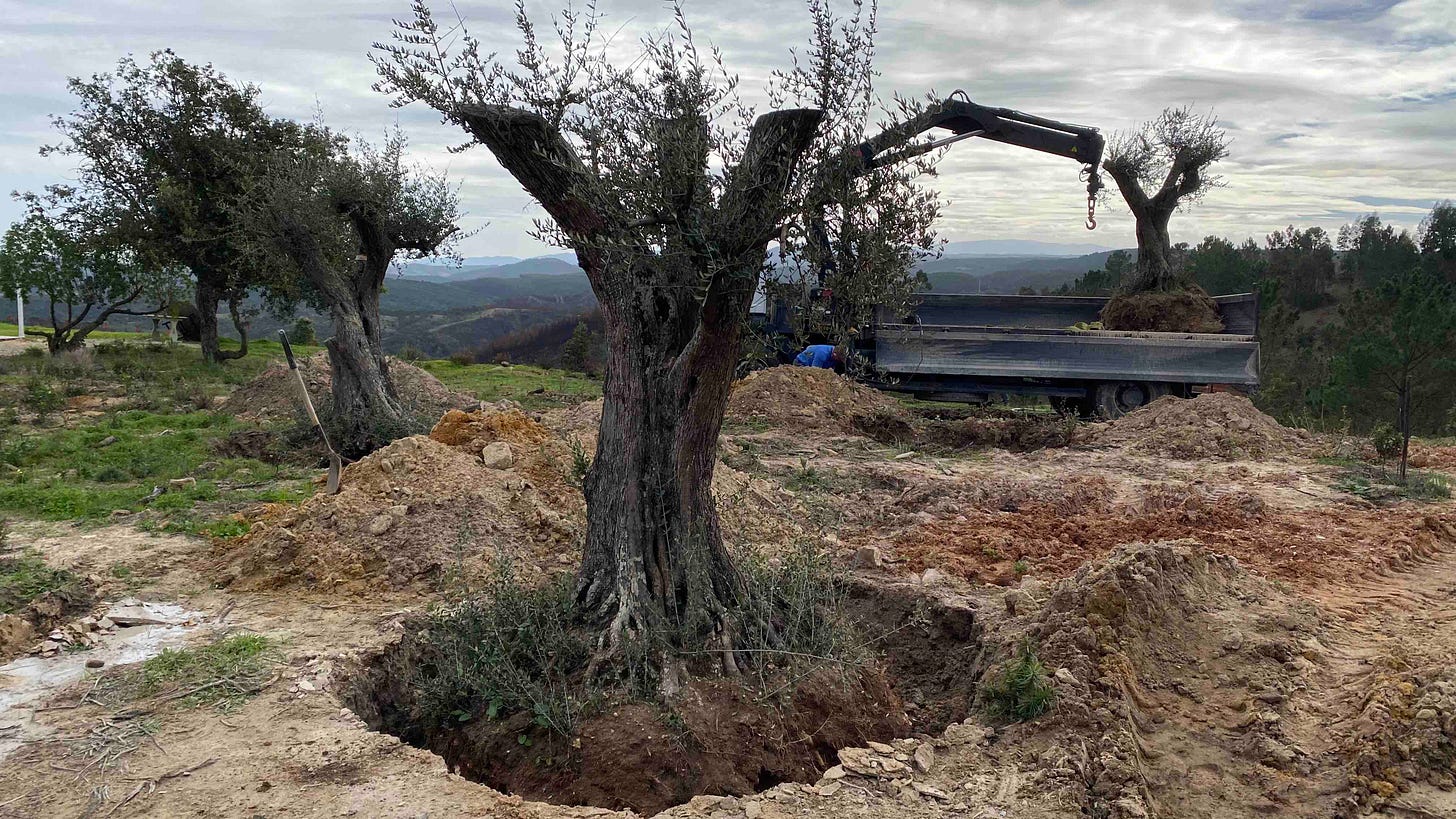
The roof of the main building was just about on – not the tiles, but enough of a plastic cover to protect the sandwich board of wood and insulation which had been installed between storms.
And the lake level was up...and was rising...as we got home, another wave of rain arrived from the Atlantic.
The earth was sodden, but our fire was cosily roaring as high winds swept in and the welcome deluge of rainfall continued.
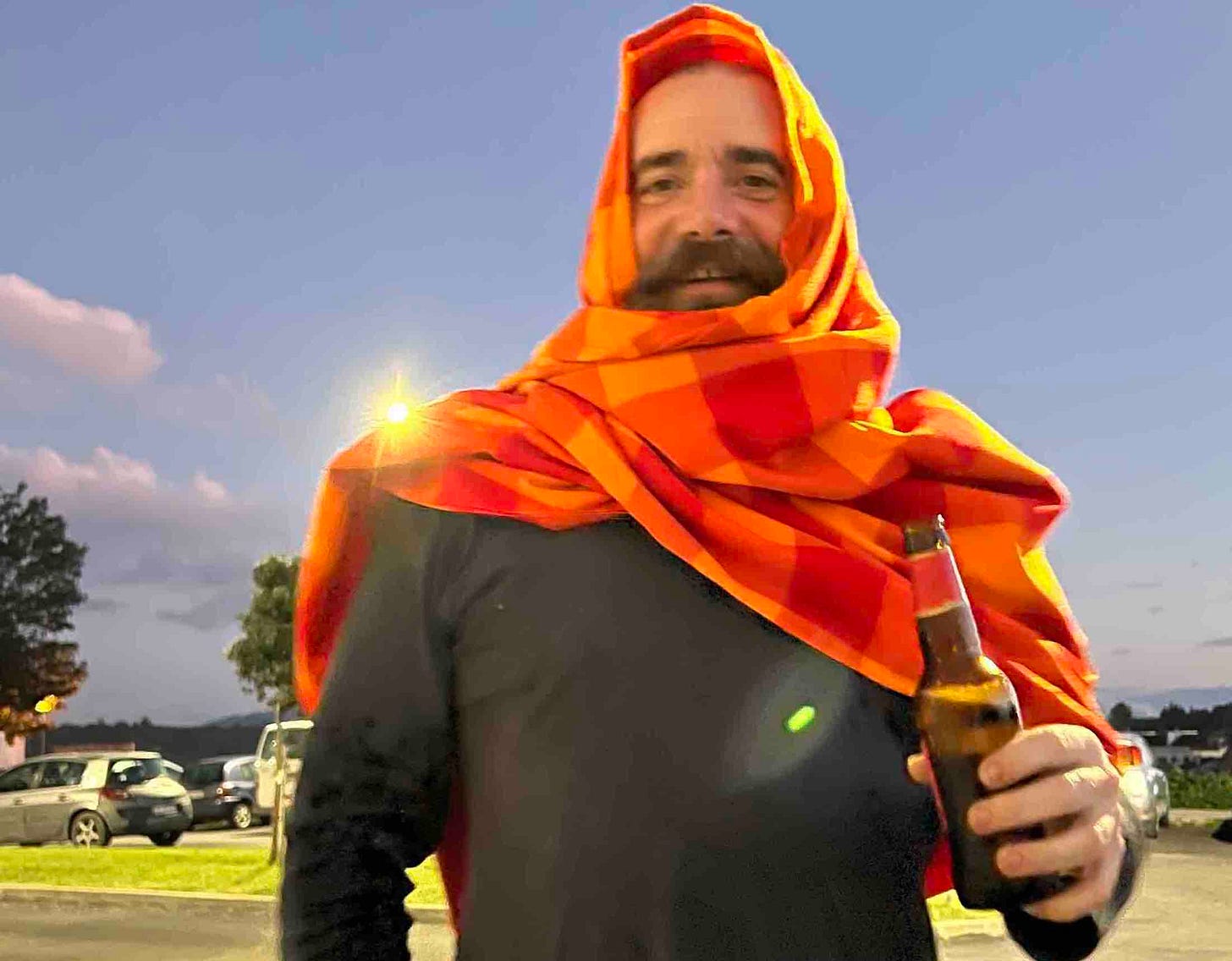
But the water wasn’t welcomed as warmly in an already saturated Lisbon where a second wave of flooding was the worst and the most damaging so far.
Road tunnels were closed off, roads were closed and the city ground to a halt as the authorities told people to stay at home.
I learned a new Portuguese word: alagado, literally meaning en-laked...the roads were laked, neighbourhoods were laked, along with hundreds of other vehicles, shops and homes: all en-laked as storms coincided with high tides.
Let’s hope the Quake museum is keeping its head above water and the robotic sushi-serving cat is keeping its paws dry.

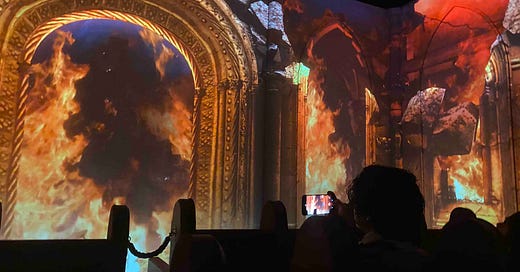



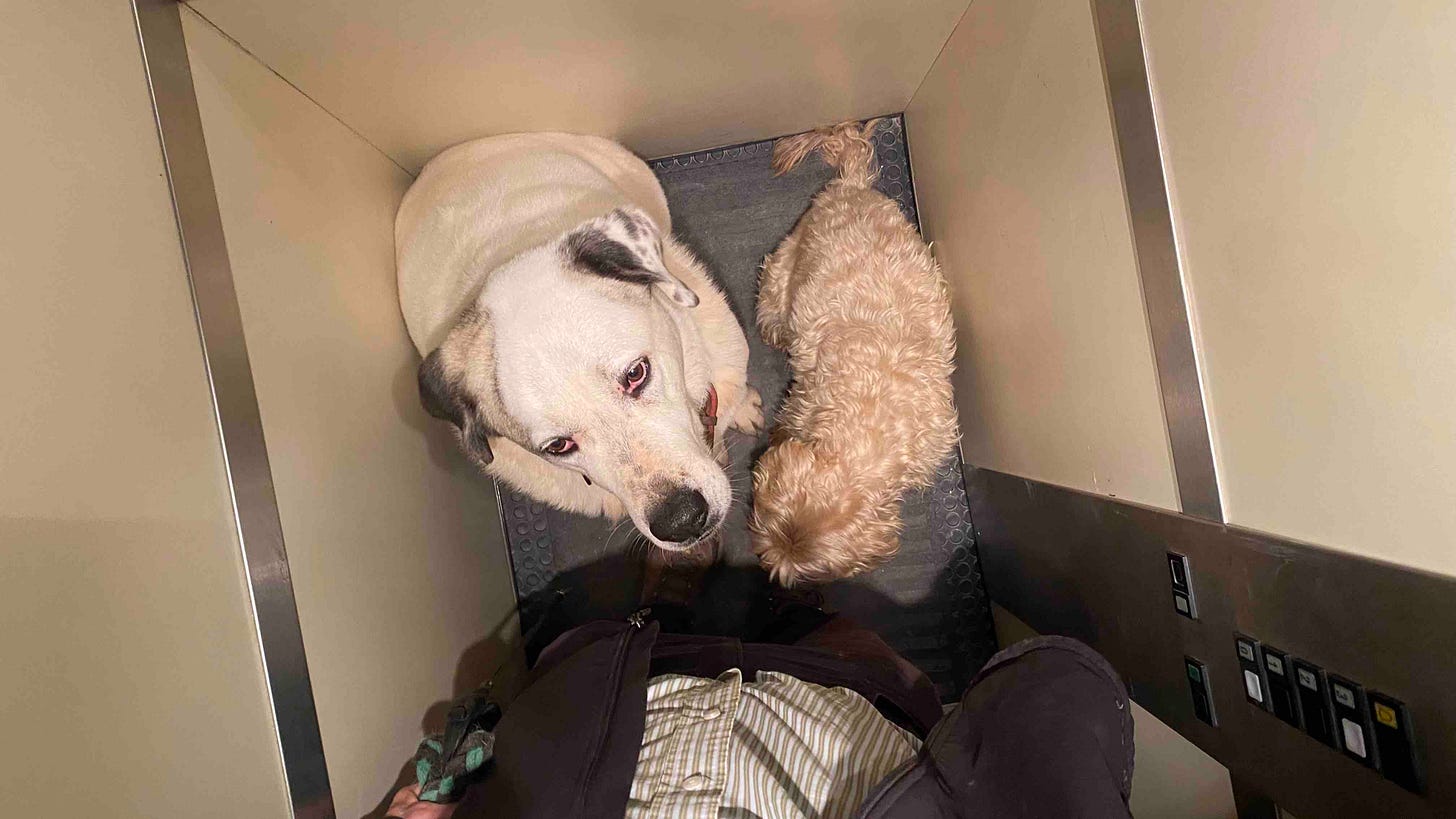
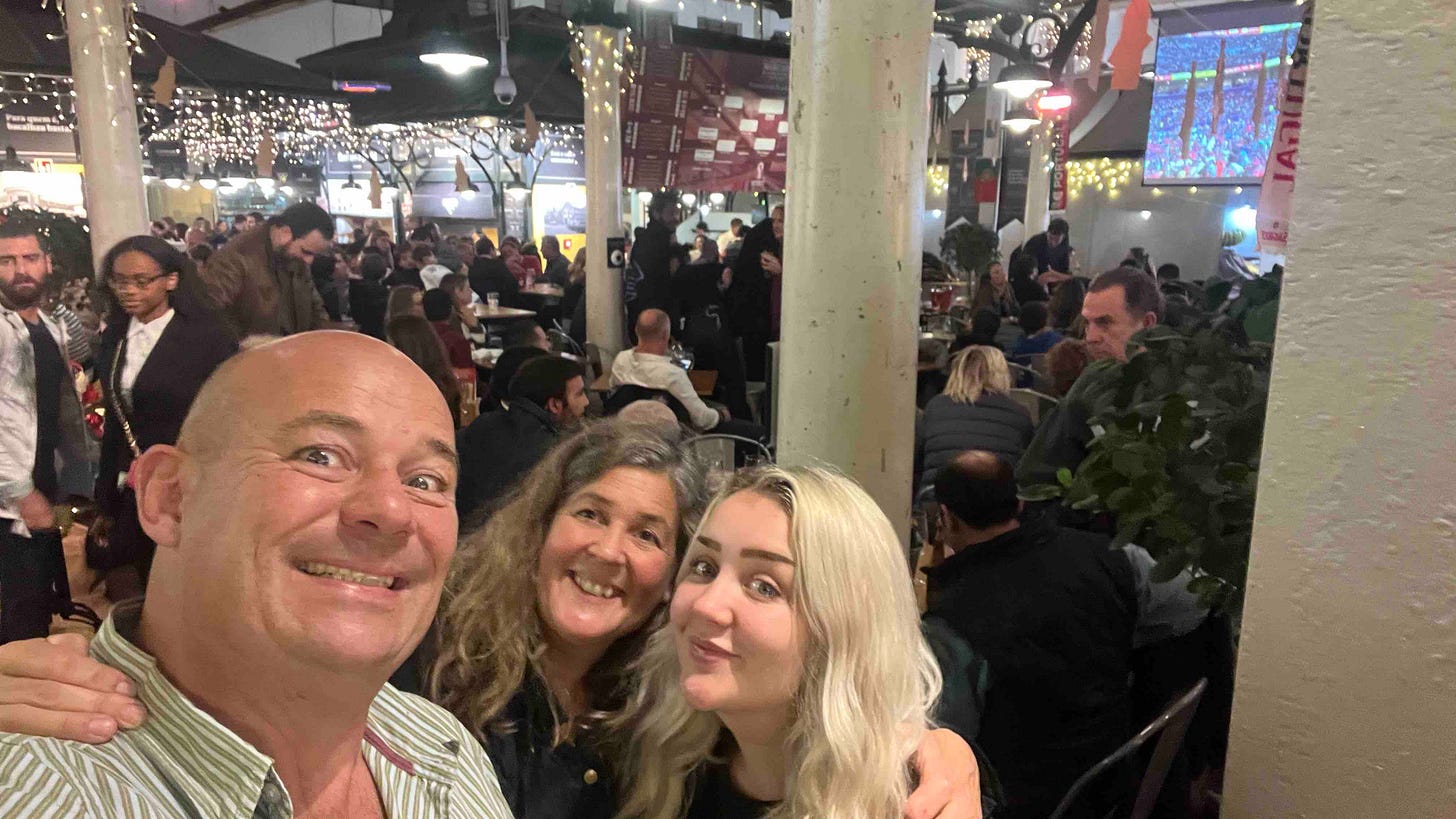
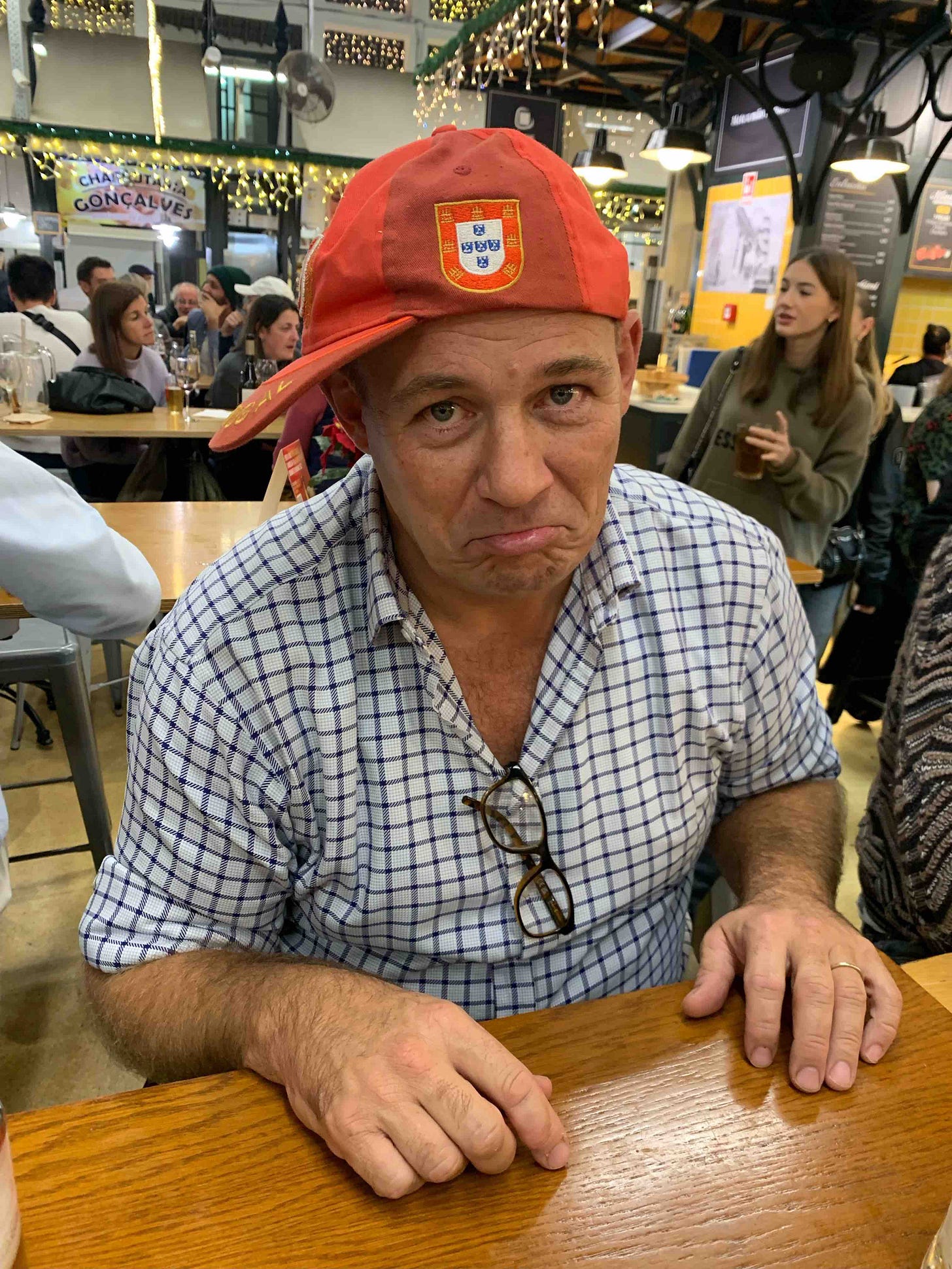
Hey you two cutie pies, missing you both, loving your stories, lots of love Craig
Looking forward to our repeat visit to wonderful Lisbon over Xmas. Thanks very much for the Quake tip ... that’s a new one to us and we shall be going!!! As we sit here in Belfast nervously waiting for our Indian takeaway, I wondered if you or Ana have had any memorable Indian food in Lisboa?
Wishing you and the fambo a lovely Christmas,
Paddy & Charmaine